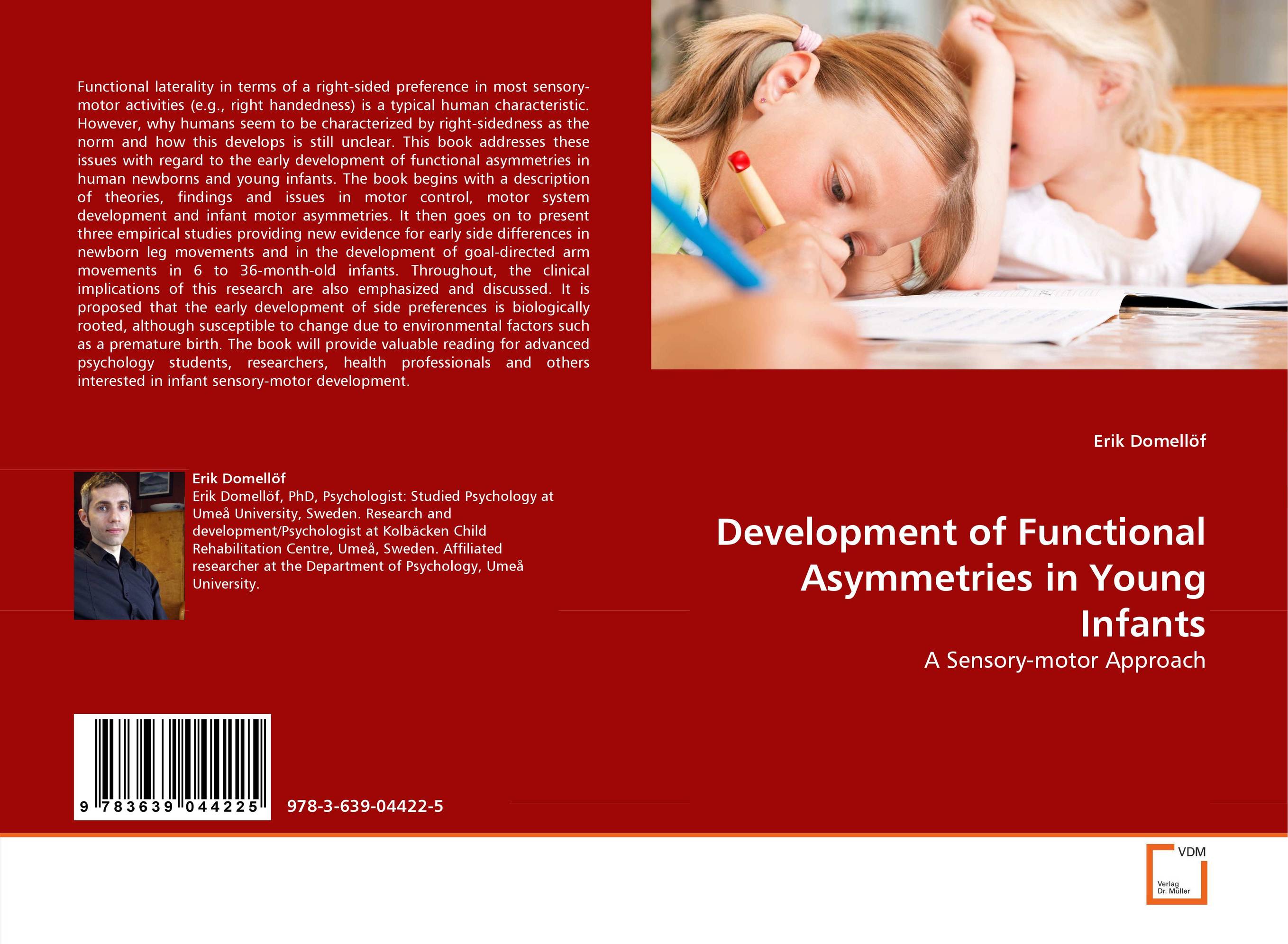| Поиск по каталогу |
|
(строгое соответствие)
|
- Профессиональная
- Научно-популярная
- Художественная
- Публицистика
- Детская
- Искусство
- Хобби, семья, дом
- Спорт
- Путеводители
- Блокноты, тетради, открытки
Development of Functional Asymmetries in Young Infants. A Sensory-motor Approach

В наличии
| Местонахождение: Алматы | Состояние экземпляра: новый |

Бумажная
версия
версия
Автор: Erik Domell?f
ISBN: 9783639044225
Год издания: 2013
Формат книги: 60×90/16 (145×215 мм)
Количество страниц: 60
Издательство: VDM Verlag Dr. M?ller
Цена: 27613 тг
Положить в корзину
| Способы доставки в город Алматы * комплектация (срок до отгрузки) не более 2 рабочих дней |
| Самовывоз из города Алматы (пункты самовывоза партнёра CDEK) |
| Курьерская доставка CDEK из города Москва |
| Доставка Почтой России из города Москва |
Аннотация: Functional laterality in terms of a right-sided preference in most sensory-motor activities (e.g., right handedness) is a typical human characteristic. However, why humans seem to be characterized by right-sidedness as the norm and how this develops is still unclear. This book addresses these issues with regard to the early development of functional asymmetries in human newborns and young infants. The book begins with a description of theories, findings and issues in motor control, motor system development and infant motor asymmetries. It then goes on to present three empirical studies providing new evidence for early side differences in newborn leg movements and in the development of goal-directed arm movements in 6 to 36-month-old infants. Throughout, the clinical implications of this research are also emphasized and discussed. It is proposed that the early development of side preferences is biologically rooted, although susceptible to change due to environmental factors such as a premature birth. The book will provide valuable reading for advanced psychology students, researchers, health professionals and others interested in infant sensory-motor development.
Ключевые слова: psychology, Laterality, Development, handedness, Human infant, Stepping response, Placing response, Head turning, Reaching movement, Kinematics



